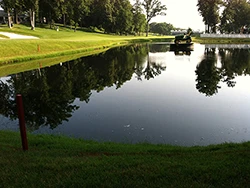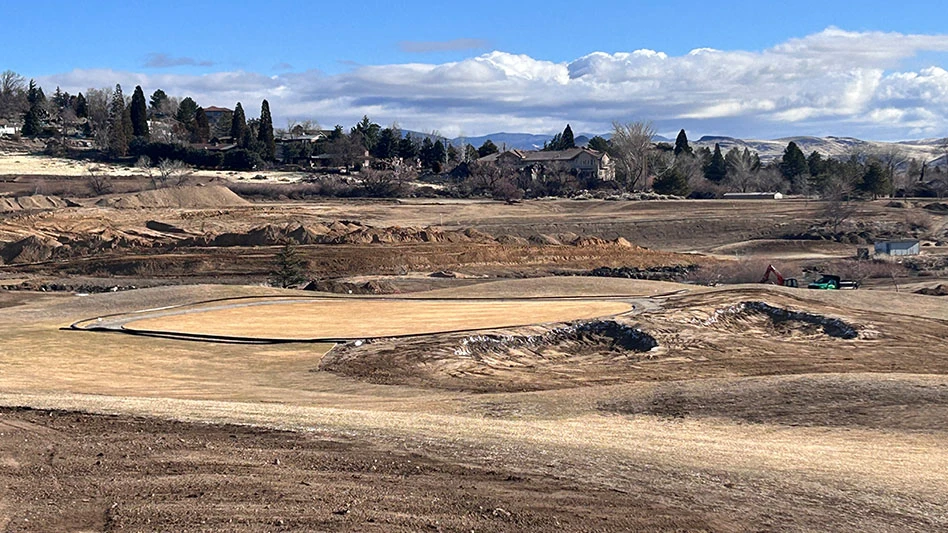
Some of the top water problems Paul Grogan considers when prepping TPC Deere Run for the John Deere Classic aren’t about a lack of water – instead, three water elements on the course spring to mind.
“We have three very shallow ponds on 2, 10 and 18,” says Grogan, the superintendent of the Silvis, Ill., golf course. “We’ve always had a lot of problems with them with algae blooms and undergrowth, almost continuously.
“When you have these shallow ponds that are only 4-5 feet deep and you’ve got 500 oak trees blowing leaves into it every year, they get to be a problem.”
Beyond the algae blooms, Deere Run sits at least partially on an old coal mine – the spring-fed pond on 2 is generally a steady, rusty orange. The course needs to look good for players from the nearby John Deere HQ, but it really has to be its best for the up-close study of a camera’s lens at the Classic, he says. When July is just ahead, he gets his team in action to try to clean those elements as best he can, with some dye programs and clearing out the weed population.
“It seemed like 18 was a heck of a lot better,” says Grogan. “We used the dye at different levels with a heavier, more concentrated dye toward tournament time. We didn’t have an algae bloom, so the pond looked pretty clear. It was excellent results.”
The darker color gave a sharper reflection than past blue colorants, he says.
“I think the reflection off the black is so much better,” he says. “If you have a really calm day and you have all those big tents around 18, their reflection in that pond is a little more enhanced with the black than what it was with the blue.”
The pond on 18 showed the biggest difference, he says, but the colorant was even able to help out the usually orange element on 2. Since the pond was spring-fed, finding the right application rate took a little trial and error, especially since it would begin diluting again quickly. But before cameras started rolling, his team put down an application to give the water element its best look, even if it was only for a short time.
Using the dye to help make the ponds more presentable with so much acreage covered in water isn’t cheap, he says, but even so, he’s working on getting into next year’s budget.
“You’ve got some dollars involved, but it’s well worth it being on TV,” says Grogan. “With us being a mile from JD corporate, we’re very cognizant of the fact that they’re here and spending a lot of money in the community and for the tournament. Anything we can do to make a better presentation, they really appreciate.”
Get curated news on YOUR industry.
Enter your email to receive our newsletters.Latest from Golf Course Industry
- The Cabot Collection announces move into course management
- Carolinas GCSA raises nearly $300,000 for research
- Advanced Turf Solutions’ Scott Lund expands role
- South Carolina’s Tidewater Golf Club completes renovation project
- SePRO to host webinar on plant growth regulators
- Turfco introduces riding applicator
- From the publisher’s pen: The golf guilt trip
- Bob Farren lands Carolinas GCSA highest honor






